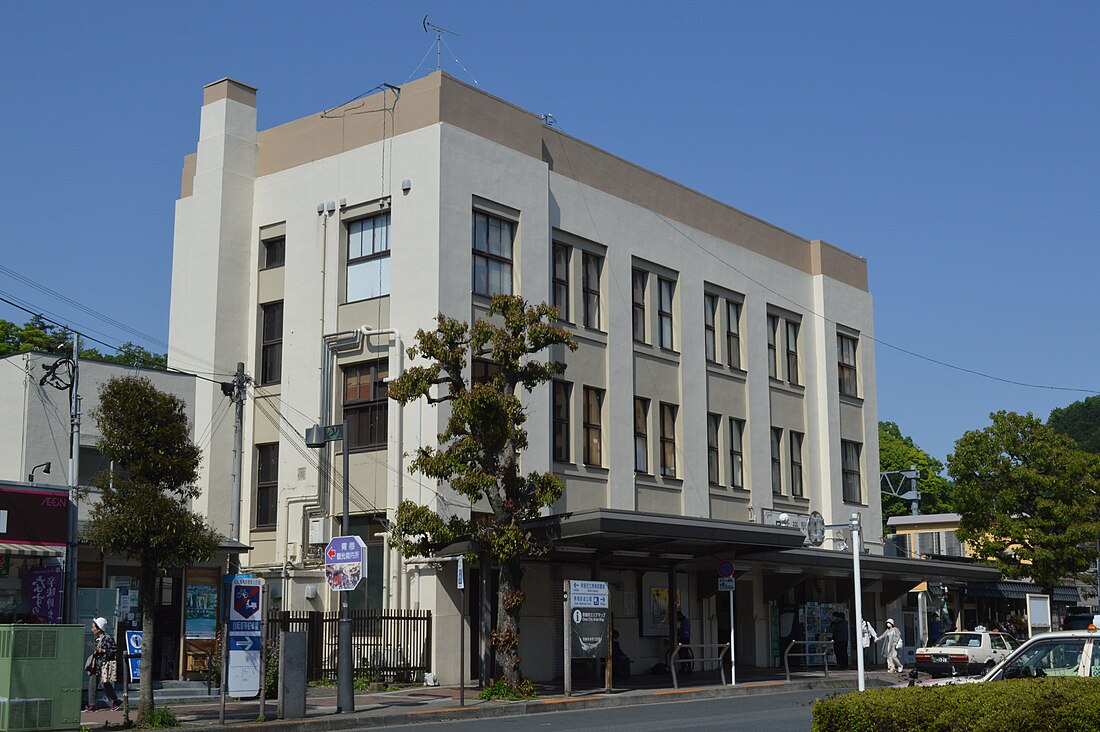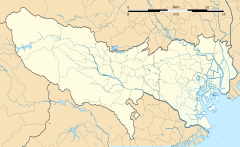Ōme Station
Railway station in Ōme, Tokyo, Japan From Wikipedia, the free encyclopedia
Ōme Station (青梅駅, Ōme-eki) is a passenger railway station located in the city of Ōme, Tokyo, Japan, operated by the East Japan Railway Company (JR East).
JC62 Ōme Station 青梅駅 | ||||||||||||||||||||||||
|---|---|---|---|---|---|---|---|---|---|---|---|---|---|---|---|---|---|---|---|---|---|---|---|---|
 Ōme Station, 2022 | ||||||||||||||||||||||||
| General information | ||||||||||||||||||||||||
| Location | 192 Honcho, Ōme-shi, Tokyo-to 198-0083 Japan | |||||||||||||||||||||||
| Coordinates | 35.7906°N 139.2582°E | |||||||||||||||||||||||
| Operated by | JR East | |||||||||||||||||||||||
| Line(s) | JC Ōme Line | |||||||||||||||||||||||
| Distance | 18.5 km from Tachikawa | |||||||||||||||||||||||
| Platforms | 1 island platform | |||||||||||||||||||||||
| Other information | ||||||||||||||||||||||||
| Status | Staffed (Midori no Madoguchi) | |||||||||||||||||||||||
| Station code | JC62 | |||||||||||||||||||||||
| Website | Official website | |||||||||||||||||||||||
| History | ||||||||||||||||||||||||
| Opened | 19 November 1894 | |||||||||||||||||||||||
| Passengers | ||||||||||||||||||||||||
| FY2019 | 6349 | |||||||||||||||||||||||
| Services | ||||||||||||||||||||||||
| ||||||||||||||||||||||||
| ||||||||||||||||||||||||
Lines
Ōme Station is served by the Ōme Line, located 18.5 kilometers from the terminus of the line at Tachikawa Station.
Station layout
The station has two island platforms serving four tracks, with a station building connected to the platforms by an underground passage. The station has a Midori no Madoguchi staffed ticket office. The theme song from Himitsu no Akko-chan is used as a departure melody.[1]
Platforms
| 1,2 | JC Ōme Line | for Haijima, Tachikawa, Shinjuku, and Tokyo for Mitake and Okutama |
| 3 | JC Ōme Line | for Mitake and Okutama |
| 4 | JC Ōme Line | for Haijima, Tachikawa, Shinjuku, and Tokyo |
History
Ōme Station opened on 19 November 1894.[2] It was nationalized in 1944. It became part of the East Japan Railway Company (JR East) with the breakup of the Japanese National Railways in 1987.
Passenger statistics
In fiscal 2019, the station was used by an average of 6,349 passengers daily (boarding passengers only).[3]
Surrounding area
See also
References
External links
Wikiwand - on
Seamless Wikipedia browsing. On steroids.


